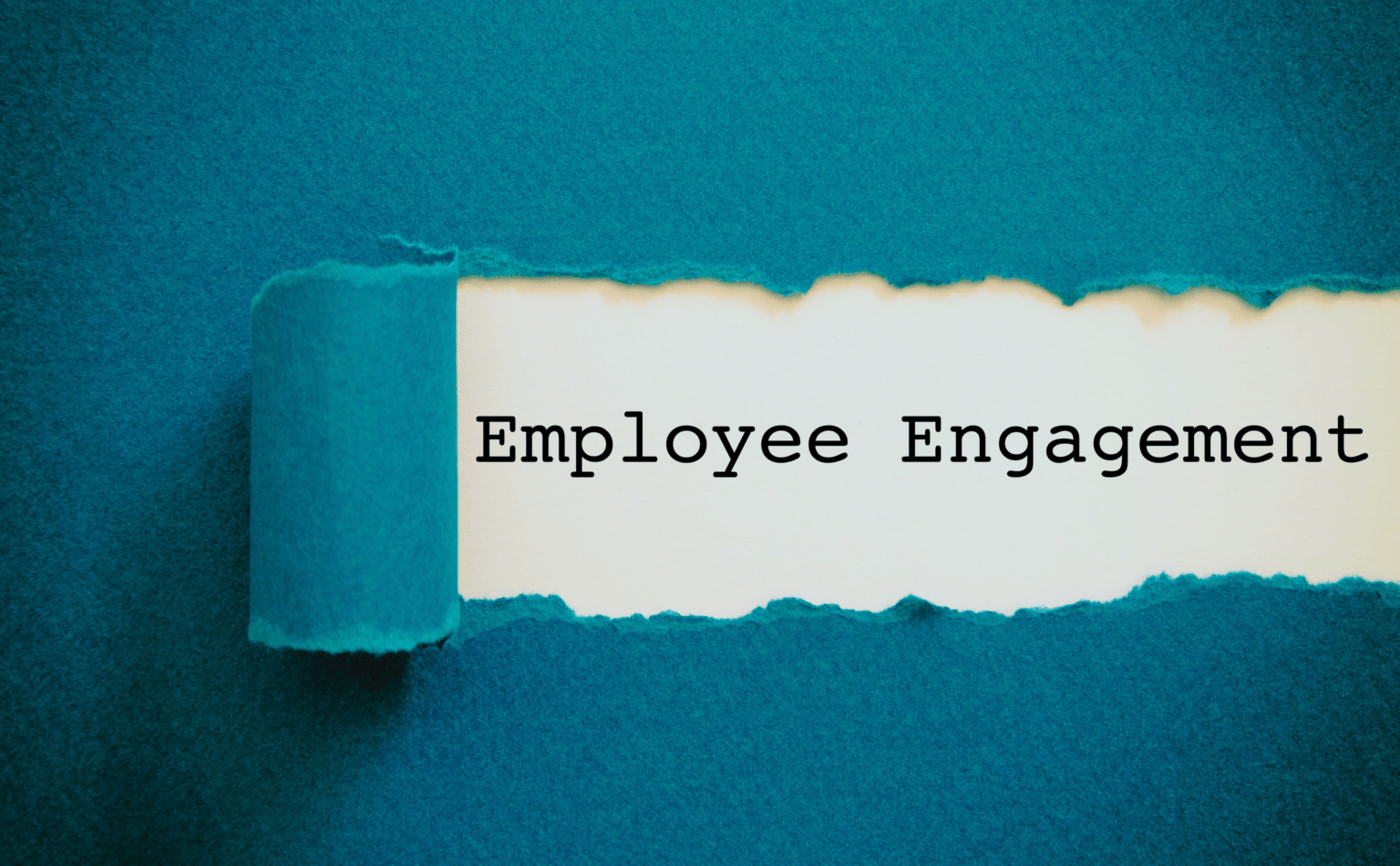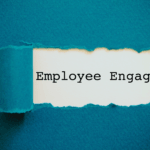In this time and age of economic and social tumults due to health and financial concerns, employees are prioritising more and more personal fulfilment and work-life balance. For example, in the 2021 Report on the State of the Global Workplace, 45% of respondents stated their lives had been affected “a lot” by the coronavirus pandemic and that they experienced more worry, stress, anger, and sadness at work compared to the past years.[1]
The pandemic has turned the tables in the relationship balance between employees and employers, which can be seen in the “Great Resignation” phenomenon that took hold in the USA and is also affecting Europe. LinkedIn’s 2022 Workplace Learning Report informed that globally, in October 2021, the share of members changing roles was up by 25%, compared with the 2019 October period.[2]
Employees started expressing their concerns loudly and are demanding overall job stability and security in an equitable and inclusive working environment that includes work benefits such as remote working, growth opportunities, career advancements, and finally, recognition for their work commitment. Thus, in general, employers are required not only to foster working policies that safeguard a healthy working environment but also to take care of employees’ overall well-being.
Employee engagement is triggered by optimal working conditions but reaches its highest peaks when employees’ personal career and life goals and the company’s culture and vision correspond. Their match provides a breeding ground for employees to develop personal and emotional connection towards the workplace.
In this article, we’ll explain how employee engagement is strongly correlated with the company’s success and profitability and how you should foster it for the well-being of your company and employees.

What Is Employee Engagement? A Definition
The first employee engagement definition comes from William Kahn, a professor at Boston University, who defined employee engagement as the “The harnessing of organisation members’ selves to their work roles; in engagement, people employ and express themselves physically, cognitively, and emotionally during role performances.”[3]
Nowadays, when we speak about employee engagement in reference to the high level of commitment, devotion, and personal connection employees feel toward their jobs and companies.
The overall company’s well-being gains from the high levels of employee engagement.
Employees feel motivated to contribute to the company’s overall achievements. They are willing to take liability for their actions and roles in the workplace because they feel responsible and indispensable for the company’s overall success. They demonstrate concern, dedication, and proactive participation in the company’s growth and enthusiasm and passion for their jobs.
Globally, only 20% of employees are engaged at work. The highest values of this statistical average belong to the U.S. and Canada, with 34% of engaged employees, while Western Europe has the lowest value of engaged employees – only 11%.[1] The statistics point out there is a lot of room for improvement. Still, the positive news is that CEOs (71%) have become aware of the importance of engaged employees to achieve overall organisational success.[4]
How Do Companies and Employees Mutually Benefit From High Employee Engagement?
High levels of job satisfaction lead employees to be more productive and higher performing – critical requirements for achieving the company’s values and goals. Furthermore, Gallup engagement measures proved that satisfied and engaged employees give rise to higher profitability (+21%), productivity(+18%), and customer satisfaction (+10%), in addition to increased employee loyalty and retention (+18%).[5] These are good reasons to invest in employee engagement, bolstered by the estimates that low engagement costs companies about $450 and $550 billion yearly.[6]
On the other hand, employees getting recognized for their work commitment, knowing their work has a sense of purpose, and being motivated to learn and grow in their roles result in career advancement and achieving personal goals. As a result, employees are content with their jobs and are willing to put extra effort into their daily work.

How to Spark Employee Engagement?
Build Trust With Your Employees
Inviting employees to contribute with their own ideas and deeds to the company’s growth is a decisive step toward a higher level of employee engagement. However, to start feeling engaged, employees have to realise they are entrusted with the company’s cause and company’s overall success. Here is why you should give your employees autonomy in decision-making and accountability for their work activities.
For example, fostering a positive error culture and a friendly working environment that encourages close collaboration and open and transparent communication will make employees feel comfortable in expressing their concerns and solutions. Not only will it bring to light problematic areas in the workflows and creative options to fix them, but it will also develop a strong sense of collaboration and team bond between your employees.
Cultivating close relationships with coworkers for your employees means being aware their work is framed into a big picture and clearly seeing where their efforts are channelled. Moreover, contributing to achieving the same goals with their colleagues, supervisors, and managers creates a strong sense of belonging to the company and, therefore, stronger investment in pursuing them.
Therefore, make sure your employees know company prospering is a team achievement by, for example, sharing financial reports and where you stand in achieving organisational objectives in the monthly company meeting.
… So Your Employees Can Trust You
Trust and respect are not unidirectionally – it’s a two-way commitment. To develop trust in management, your management board should lead by example and show a positive work attitude while fostering moral integrity and dedication to the employees’ well-being. If you inspire your employees and invest in taking care of them, your employees will look up to you and return the favour by being personally invested and inspired in their daily work.
Some of the following statistics show how important it is for employees to have a transparent dialogue with their managers who put themselves on the line by discussing open topics and have assertive responses to feedback. A LinkedIn study, for example, showed that for employees having a stable and consistent feedback loop with their supervisors is more critical than expected: employees who receive daily feedback are 3X more likely to be engaged than those who receive feedback once a year.[2]
This matches Gallup’s discovery that managers are accountable for 70% of the variance in employee engagement values across different business units.[7] Poor employee engagement is also the leading cause of high employee turnover, as pointed out in the LinkedIn Report: of employees who are not satisfied with their managers, nearly 50% are more likely to apply for a new job.[2]

Offer Growth and Development Opportunities
As we have learned so far, taking care of employees means taking care of them as people – and in the working environment, this also translates into taking care of their careers. In this new working era subject to constant digital transformation, developing new skills to keep pace with times is essential for employees’ professional fulfilment.
For example, LinkedIn Report stated that for the same occupation, their members’ skillset changed about 25% from 2015 to 2021, and they expect it to change up to 40% by 2025.[2]
Therefore, offering developmental and growth opportunities proves you value your employees, and you’re ready to invest in their upskilling. In addition to it, the opportunities to learn and grow at the workplace are the number 1 factor according to which employees define a working environment as exceptional.[2]
What employers can do to enable employees to grow careers is to assign them challenging tasks from which they can gain valuable experience and learning. Another important measure is to offer your employees workshops, training sessions, and certification courses where they can upgrade and update their talents.
On top of that, consider attuning your employees concretely to the growth opportunities within the company. You can do that by discussing a career plan with each of your employees and tracking the actions they can undertake in their daily working activities to achieve their professional development. Be aware that employees who have had conversations with their manager on their professional goals in the last six months are 2.8 times more likely than other employees to be engaged.[2]
As LinkedIn reports, employees’ motivations to learn are strictly connected to career advancement, including getting another job internally within the company or being promoted.[2] Opportunities for internal mobility are of extreme importance both to your employees and employers in terms of employee retention. The LinkedIn Report showed some correlated statistics. For example, employees who feel their skills are not being put to good use are 10x more likely to search for a new job than those who think their role matches their skillset.[2] Moreover, companies with good internal mobility can retain employees 2x longer (5.4 years) compared to the average retention rate of 2.9 years.[2]
Praise Your Employees
For your employees, discretionary effort – or putting maximum and even extra effort into their jobs- is not a duty coming with the work contract. So make sure you, as an employer, show appreciation for it. For example, in this report on the impact of employee engagement on performance, 72% of respondents asserted that recognizing and praising high performers significantly impacts employee engagement because it increases job satisfaction.[4]
Employee recognition should be given anytime your employees complete challenging tasks, put themselves in driver roles, or have regularly good job performance. In general, you should praise your employees anytime they succeed in bringing profit to your company. And if you don’t do that, you might create an unpleasant working atmosphere and even disrupt the collaboration within the teams.
As Gallup warns, engaged employees are drivers of performance and innovation and positively impact the teams. On the contrary, disengaged employees undermine the company’s success both because of their poor performance. In addition, they are more likely to speak negatively about the company and can negatively influence their team members.
Employee recognition could occur by giving out monetary rewards, but several studies – among which “Methods for motivating employees” – indicate they are not an effective motivator in the long term.[8] Employees don’t want only financial recognition for their value but also praise from their managers for good work because it raises their spirits. Employee motivation goes through managers expressing gratitude and esteem for employees’ excellent work, such as verbal appreciation during company meetings, acknowledgment of their achievements in the company’s newsletter, public thank you in the company’s slack channels, etc.

Be a Company Your Employees are Proud To Work For
Fostering a good company culture that embeds all the above elements will benefit employee engagement and, therefore, retention but also your brand attractiveness. According to the Glint data, employees who highly rate their company culture are 25% more likely to be happy at work and 31% more likely to recommend their company as a good employer. [9]
Moreover, the word-of-mouth of your current employees can strongly influence your potential job candidates in applying or not for your open positions and accepting or not your job offer. Having your employees engaged will ensure you have reliable brand ambassadors and employee advocates sharing their positive working experience with their networks and recommending your company as a valuable employer. This is a huge opportunity to attract talent: 71% of employees use or have used referrals from a company’s current employees to learn about job opportunities.[2]
Have you already considered introducing an employee referral program to your company? The referral channel is an all-in-one H.R. tool that helps you both keep your employees engaged within your company’s growth whilst attracting new talent. Thanks to your current employees who advocate for your company as a good place to work, you will be able to pull the top talents into your recruiting pipeline simply and quickly.
If you would like to know more about how an employee referral program works and what are its further benefits, read our comprehensive guide on employee referral programs in 2022.
Sources
[1] LinkedIn.2022 Workplace Learning Report. https:\/\/firstbird.com//learning.linkedin.com/resources/workplace-learning-report
[2] Gallup. State of the Global Workplace: 2021 Report. https://www.gallup.com/workplace/349484/state-of-the-global-workplace.aspx
[3] Kingston University. Employee Engagement: A Literature Review. https:\/\/firstbird.com//eprints.kingston.ac.uk/id/eprint/4192/1/19wempen.pdf
[4]Harvard Business Review Analytic Services. The Impact of Employee Engagement on Performance. https:\/\/firstbird.com//hbr.org/sponsored/2016/04/the-impact-of-employee-engagement-on-performance
[5] Gallup. The Powerful Relationship Between Employee Engagement and Team Performance. https://www.gallup.com/workplace/321032/employee-engagement-meta-analysis-brief.aspx
[6] The Conference Board. DNA of Engagement, How Organizations Create and Sustain Highly Engaging Culture. https://www.conference-board.org/publications/publicationdetail.cfm?publicationid=2844
[7] Gallup. Why Great Managers Are So Rare.https://www.gallup.com/workplace/231593/why-great-managers-rare.aspx
[8] Mossbarger, M., & Eddington, J. (2003). Methods for motivating employees. Weber State University.
[9] Glint (2021). Employee Well-Being Report. https://www.glintinc.com/resource/employee-well-being-report-may-2021/





















